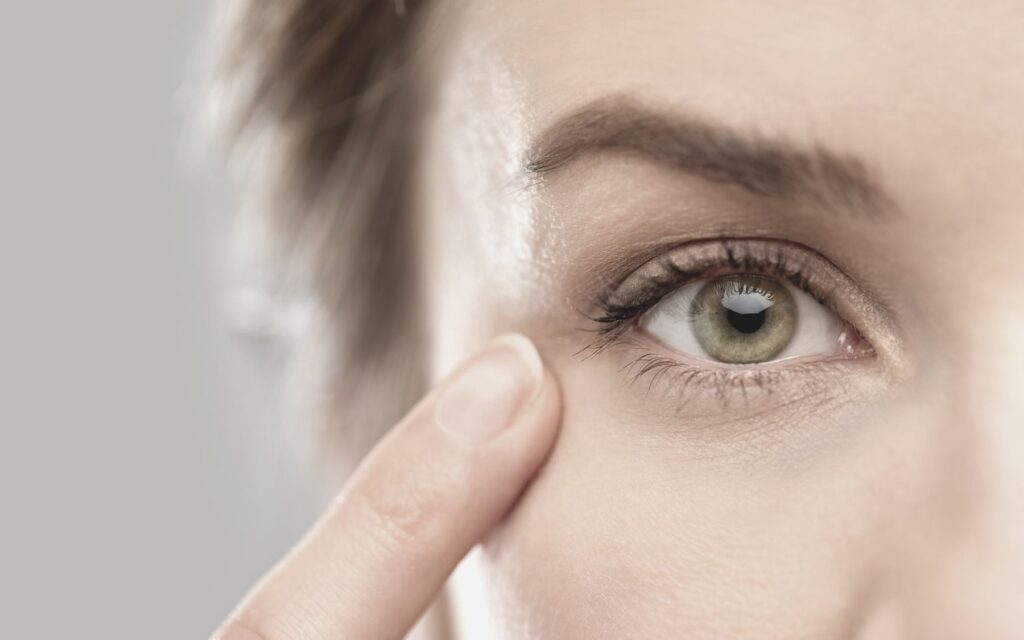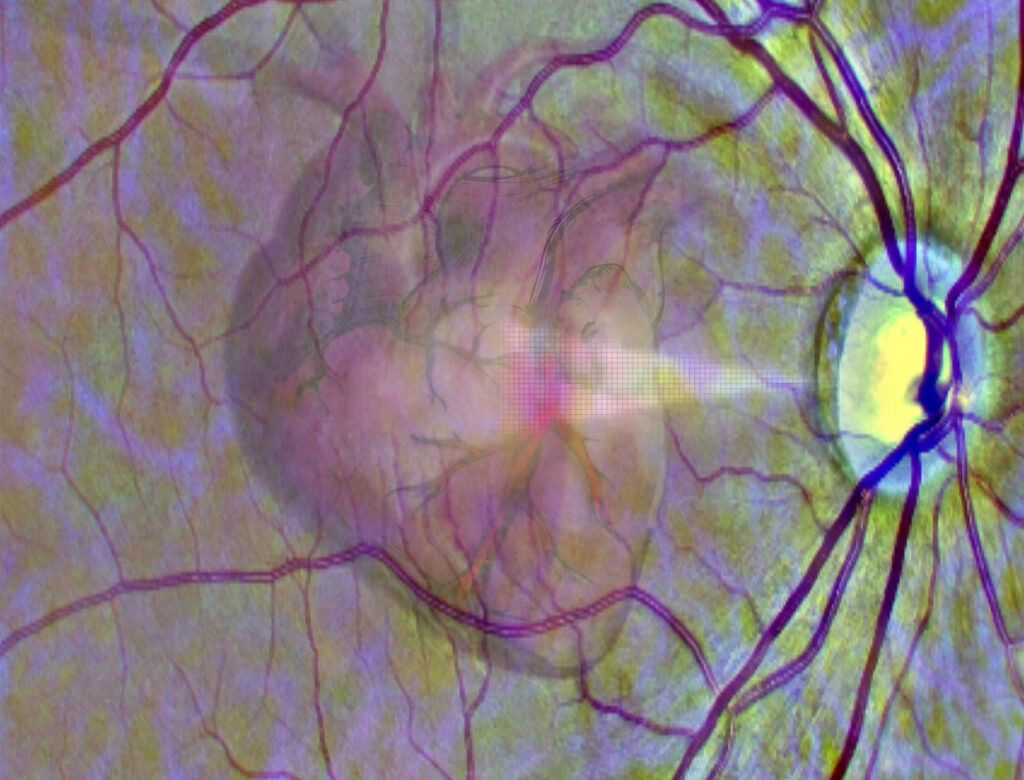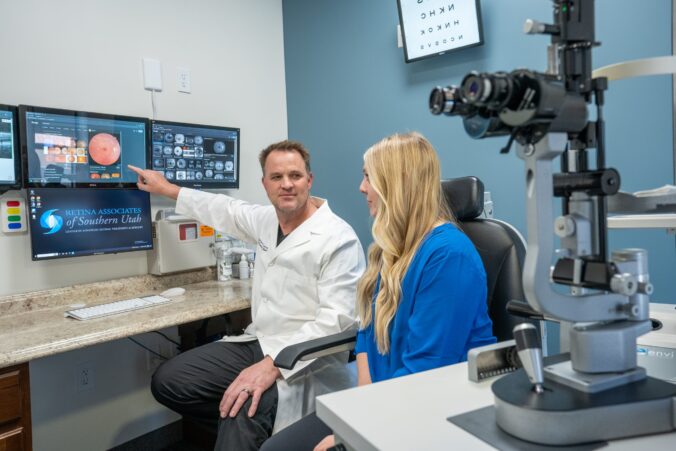In today’s world, where technology plays a monumental role in our daily lives, preserving and enhancing our vision has become a top priority. Vision wellness encompasses a range of practices and treatments aimed at maintaining optimal eye health. From preventative measures to cutting-edge retinal treatments, this multidimensional approach can have a significant impact on our overall well-being. In this article, we delve into the world of vision wellness and explore the transformative power of modern retinal treatments.
The Human Retina: A Brief Overview
At the core of our visual system lies the retina, a thin layer of tissue lining the back of the eye. Understanding the structure and function of the retina is crucial in comprehending retinal damage symptoms and the impact of cutting-edge treatments.
The retina, although a small and delicate part of the eye, plays a vital role in our ability to see and interpret the world around us. It is a complex and intricate structure, consisting of several layers that work together seamlessly to capture and process visual information.
One of the key components of the retina is the photoreceptor cells, which include two types: rods and cones. These specialized cells are responsible for converting light into electrical signals that can be interpreted by the brain. Rods are highly sensitive to light and are primarily responsible for our ability to see in low-light conditions, while cones are responsible for color vision and visual acuity.
Surrounding the photoreceptor cells are other important layers of the retina, including the bipolar cells, ganglion cells, and horizontal and amacrine cells. These cells work together in a complex network, transmitting and processing visual information before sending it to the brain via the optic nerve.
See Also: Exploring the Benefits of Laser Eye Surgery

Anatomy of the Retina
The retina consists of several intricate layers that work together to capture and process visual information. The photoreceptor cells, namely rods and cones, convert light into electrical signals, which are then transmitted to the brain via the optic nerve. This complex system allows us to perceive images and colors accurately.
Within the retina, the rods and cones are located in the outermost layer, known as the outer nuclear layer. These cells contain specialized proteins called photopigments, which absorb light and initiate the process of vision. The rods are more numerous than cones and are primarily responsible for our ability to see in dim light conditions, such as at night or in a dark room.
Behind the rods and cones lies the inner nuclear layer, which contains the bipolar cells. These cells receive signals from the photoreceptor cells and transmit them to the ganglion cells, which are located in the innermost layer of the retina. The ganglion cells are responsible for collecting and integrating visual information before sending it to the brain.
In addition to the photoreceptor, bipolar, and ganglion cells, the retina also contains other specialized cells that play important roles in visual processing. Horizontal cells are responsible for lateral inhibition, which helps enhance contrast and sharpen visual perception. Amacrine cells, on the other hand, modulate the transmission of signals between different layers of the retina, allowing for complex processing and integration of visual information.
Common Retinal Disorders
Various retinal disorders can compromise our vision and require specialized treatments. Conditions such as retinal detachment, diabetic retinopathy, and age-related macular degeneration can lead to severe visual impairment if left untreated. Recognizing the early signs and seeking professional assistance is crucial for managing these disorders effectively.
Retinal detachment occurs when the retina separates from the underlying layers, disrupting the flow of nutrients and oxygen to the photoreceptor cells. This can result in a sudden loss of vision or the appearance of floaters and flashes of light. Immediate medical attention is necessary to prevent permanent vision loss.
Diabetic retinopathy is a complication of diabetes that affects the blood vessels in the retina. High blood sugar levels can damage the tiny blood vessels, causing them to leak or become blocked. This can lead to vision loss or even blindness if not treated promptly. Regular eye exams and proper management of diabetes are essential for preventing diabetic retinopathy.
Age-related macular degeneration (AMD) is a progressive condition that affects the macula, the central part of the retina responsible for sharp, detailed vision. As we age, the macula can deteriorate, leading to blurred or distorted vision. There are two types of AMD: dry AMD, which involves the gradual breakdown of the macula, and wet AMD, which involves the growth of abnormal blood vessels beneath the macula. Early detection and treatment can help slow the progression of AMD and preserve vision.
In conclusion, the human retina is a remarkable and complex structure that plays a crucial role in our ability to see and interpret the world around us. Understanding its anatomy and the common disorders that can affect it is essential for maintaining good vision and seeking appropriate treatment when necessary.

Understanding Vision Wellness
When it comes to vision wellness, it’s crucial to recognize the importance of eye health. Our eyes are intricate organs that enable us to perceive the world around us. They are subject to various external factors, such as aging, UV exposure, and lifestyle choices, that can affect their health and functionality. Vision wellness aims to promote the well-being of our eyes through preventive care, early detection of issues, and advanced treatments.
Did you know that our eyes are constantly at work, even when we’re not consciously aware of it? They are responsible for capturing light and converting it into electrical signals that our brain interprets as images. This incredible process allows us to see the vibrant colors of a sunset, the intricate details of a flower, and the expressions on the faces of our loved ones.
The Importance of Eye Health
Maintaining optimal eye health is vital for our overall quality of life. Our vision allows us to navigate the world with ease, appreciate its beauty, and engage in countless activities. Regular eye examinations can help detect early signs of eye diseases, including glaucoma, cataracts, and macular degeneration, empowering us to take proactive measures to preserve our vision.
Imagine not being able to see the smile on a child’s face or read your favorite book. It’s easy to take our vision for granted, but the reality is that it’s a precious gift that deserves our utmost care and attention. By prioritizing eye health, we can ensure that we continue to enjoy all the wonders and experiences that the world has to offer.
Key Components of Vision Wellness
Vision wellness encompasses a holistic approach to eye care. It involves adopting healthy lifestyle habits, such as maintaining a balanced diet rich in vitamins and minerals beneficial for eye health. Did you know that foods like leafy greens, citrus fruits, and fish are packed with nutrients that support eye health? Including these foods in our diet can provide the necessary nourishment for our eyes to function optimally.
Regular exercise and minimizing screen time can also play a role in promoting eye wellness. Engaging in physical activity improves blood circulation, which in turn benefits our eyes by providing them with essential nutrients and oxygen. Additionally, reducing the amount of time we spend staring at screens can help alleviate digital eye strain, a common condition caused by prolonged computer, smartphone, or tablet use.
Moreover, wearing appropriate eyewear, including sunglasses with UV protection, can shield our eyes from harmful rays. UV radiation from the sun can damage the delicate structures of our eyes, leading to conditions such as cataracts and age-related macular degeneration. By wearing sunglasses that block out both UVA and UVB rays, we can safeguard our eyes and enjoy outdoor activities without compromising our eye health.
In conclusion, vision wellness is not just about having clear vision; it’s about taking care of our eyes in every aspect of our lives. By understanding the importance of eye health and implementing key components of vision wellness, we can ensure that our eyes remain healthy and continue to serve us well throughout our lives.
The Evolution of Retinal Treatments
Over the years, the field of retinal health has witnessed monumental advancements in both traditional and modern treatment approaches. These advancements have revolutionized the way we tackle retinal disorders and maximize patient outcomes.
Traditional Approaches to Retinal Health
Traditional treatment modalities for retinal disorders included laser therapy and surgical interventions. Laser therapy aimed to seal leaking blood vessels or target damaged retinal tissue. Surgical interventions, such as vitrectomy or retinal detachment repair, sought to restore the integrity of the retina. While effective, these methods often came with significant risks and lengthy recovery periods.
The Shift to Modern Retinal Treatments
With the advent of cutting-edge technologies, a paradigm shift has occurred in the field of retinal treatments. Advanced imaging techniques, such as optical coherence tomography (OCT), enable detailed mapping of retinal structures, facilitating accurate diagnosis and tailored treatment plans. Additionally, pharmacological approaches, such as anti-VEGF injections, have emerged as a minimally invasive alternative to traditional surgical interventions.

Cutting-edge Retinal Treatments
The field of retinal treatments continues to evolve, offering innovative solutions that were once unimaginable. These breakthroughs have paved the way for improved outcomes and a brighter future for those affected by retinal disorders.
Innovations in Retinal Surgery
Advancements in surgical techniques have revolutionized retinal surgery, allowing for more precise and less invasive procedures. Microincision vitrectomy surgery (MIVS) utilizes smaller incisions, reducing post-operative discomfort and accelerating recovery time. Robotic-assisted surgery is also being explored, offering greater precision and control during delicate procedures.
Breakthroughs in Non-Invasive Treatments
Non-invasive treatments have also seen significant progress in recent years. Gene therapy, for example, shows promising results in combating inherited retinal disorders by addressing genetic mutations. Similarly, stem cell research holds the potential to replace damaged retinal cells, restoring vision in individuals affected by various retinal diseases.
The Impact of Advanced Retinal Treatments
The advent of cutting-edge retinal treatments has had a profound impact on patient outcomes and quality of life. These breakthroughs offer new hope to individuals living with retinal disorders, empowering them to regain or preserve their vision.
Improvements in Patient Outcomes
Advanced retinal treatments have significantly improved patient outcomes, accelerating recovery and minimizing post-operative complications. Minimally invasive procedures reduce the risk of infection and speed up the healing process, allowing patients to return to their daily lives more quickly. Furthermore, the implementation of personalized treatment plans based on individual characteristics yields better long-term results.
The Future of Retinal Health and Vision Wellness
The future of retinal health and vision wellness holds great promise. Ongoing research and advancements in technology continue to push the boundaries of what is possible in the field of retinal treatments. Improved accessibility to these treatments, along with a heightened emphasis on preventive care, will further empower individuals to take charge of their eye health and ensure a brighter future for all.In conclusion, vision wellness is not only about maintaining healthy eyes but also about embracing cutting-edge retinal treatments that can transform lives. By understanding the importance of eye health, appreciating the complexity of the human retina, and recognizing the evolution of retinal treatments, we can herald a future where vision is preserved and enhanced through innovation and proactive care.





